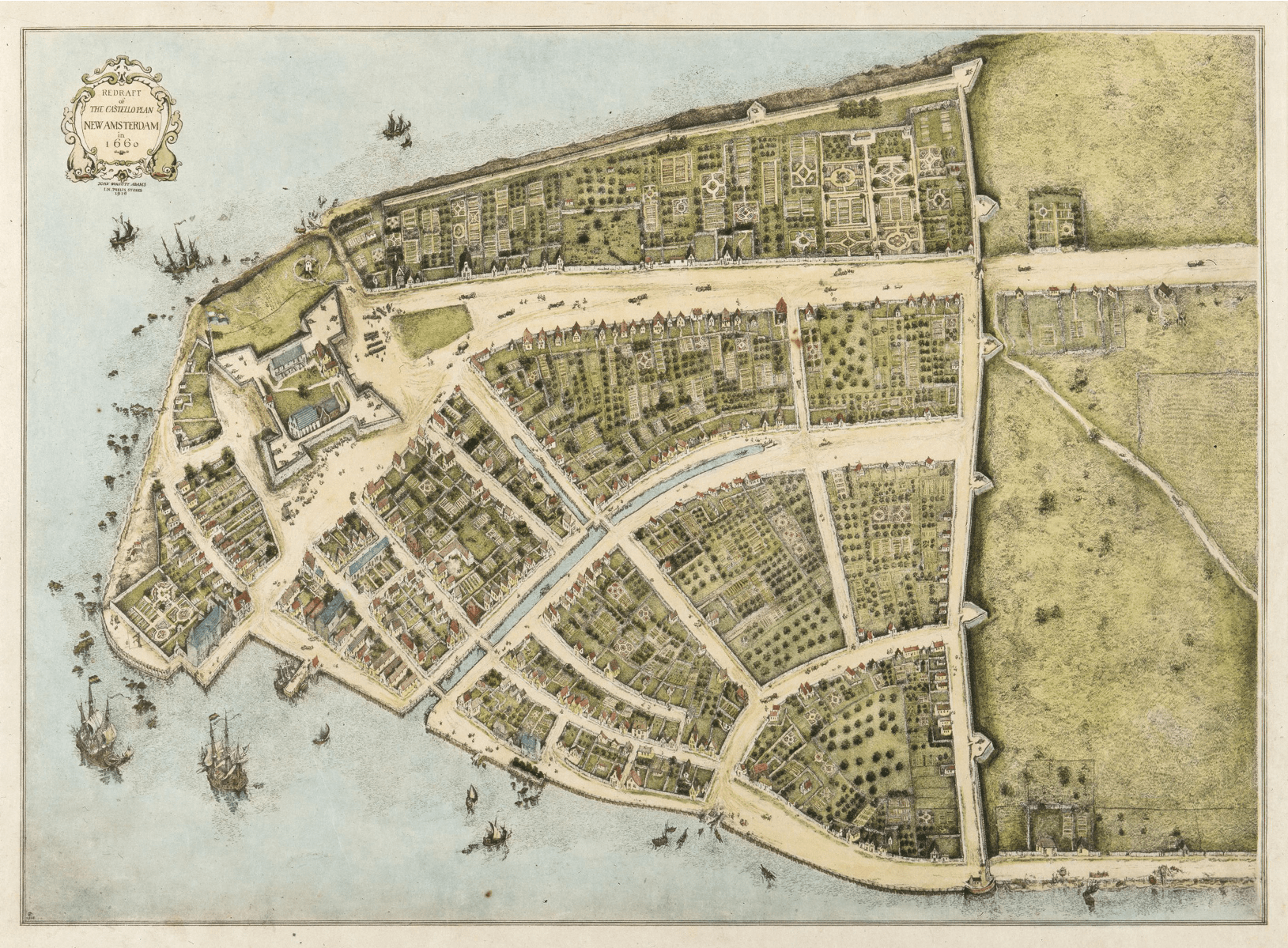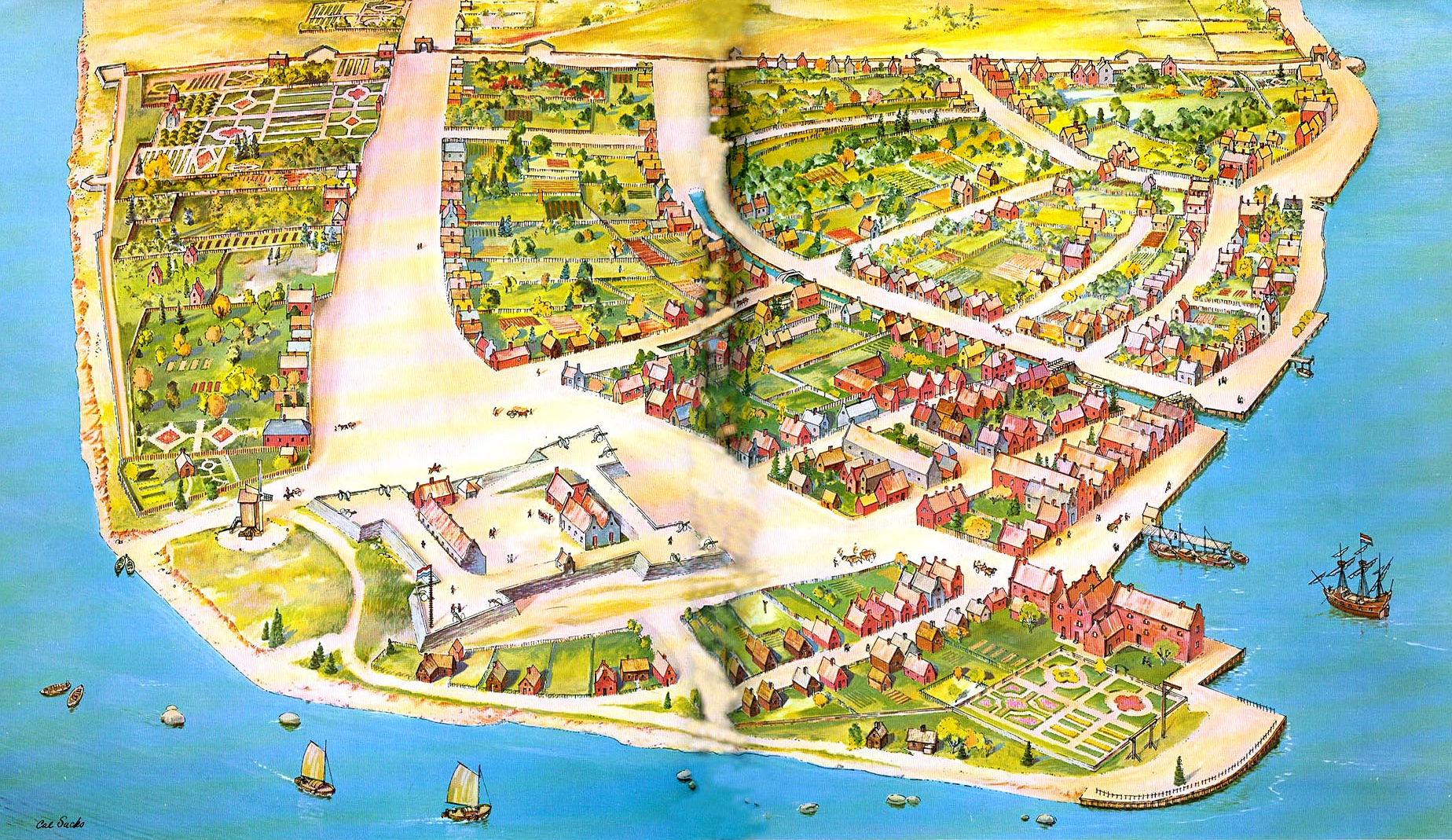For this second installment of a three part blog series, The John Adams Institute talked with Dennis J. Maika, Senior Historian with the New Netherland Institute, who is one of the scholars who guides the project.
‘New Amsterdam Stories’ is a collaboration between the New Netherland Institute, the New York City Municipal Archives and the City Archives of Amsterdam. Records from these archives are disclosed on the website, telling stories about individuals that dwelled in New Amsterdam. In those early days the ties with the colonists’ homeland, the Dutch Republic, were still very strong. This means that documents about single individuals are often found in both archives. The project tries to tell a (more) complete story by combining information from both archives in one place.
The project tries to reconstruct the lives of individuals in New Amsterdam by showing snapshots of their lives. While the story of someone’s life can never be completely traced through an archive, putting the pieces of the puzzle together might give us a glimpse into that life. For the first phase of the project, all three institutions decided to focus on residents whose records were definitely available in both archives. After selecting the individuals, the archives dug up the relevant records about these early city dwellers. This process was guided by dr. Maika, who works as a historian for the New Netherland Institute, a non-governmental organization that ‘aims to cast light on America’s Dutch roots’. This project is one of the efforts to reach that goal, and also attempts to answer the question that preoccupies all archives: how can we offer this information to the general public?
Public participation and engagement has changed over the last few years, as the wind of digitization is blowing even through stuffy archives all over the world: the New York City Municipal Archives and the Stadsarchief Amsterdam are both digitizing. Thanks to this process, documents that had been put away somewhere in the endless rows of filing cabinets are now just one click away.

The New York records are held in Surrogate’s Court
The archives want to share this information with the world, and the New Amsterdam Stories are an answer to this huge task. Archive visitors need to be guided in order to wade through the wealth of information available. At the start of this project, it was clear that putting individuals in the spotlight would be the key to achieve this. Individuals are an easy entrance for the public, but they are also an easy entrance for the archivists. Individuals can be traced. They show up in court records; they leave records with their notary.
The Amsterdam notaries, held at the Stadsarchief, are the core of this project. Before there were lawyers, people needed notaries to draw up any record that they would want to hold up in court, such as wills, marriages, sales contracts, business contracts, indentured servitude contracts, debt obligations. All these records have been kept by these notaries, and ended up in the archives. The collection is incredibly rich and representative of that time, because almost everybody used a notary (you did not have to have a lot of money to still want to take good care of your business and life affairs). In combination with the New Amsterdam court records, which are held at the New York City Municipal Archives, so much can be discovered about the early residents. These records are truly a treasure trove, filled with known and unknown stories.
One of the most well-known individuals of New Amsterdam was Petrus Stuyvesant. Of course, a Story had to be written about him, but it should not be the obvious story of him as the last director-general of New Netherland, or about how he lost his leg: this project should tell the story that is in the records. The records contained his will – not his final will, but one that he had drawn up when he was only 29 years old. He was about to leave for the Caribbean, where he would serve the Dutch West India Company. He bequeathed all his belongings to his sisters Anna and Margriete, and in case they would die, to their children. While this might not appear as the most exiting story, it does tell something about him as one reads between the lines. It tells us that he might have been afraid to die; he was most definitely aware of the dangers involved in a voyage across the ocean. In those days, many did not return from these long missions, but not everybody was ready to face that. Petrus Stuyvesant was. The will is not especially interesting because of its contents, but because he made it when he did: at such a young age, and about to travel across the Atlantic Ocean.
However, not everybody in the Stories is as famous as Stuyvesant. For this first phase, the project tried to select a limited cross-section of the population. This is why the Story of Anna and Wolfert Webber is included. Although they are not famous historical figures, they are still of historical significance. They represent typical settlers, whose lives are little known, yet nonetheless important to the city. They seemed to be average people living an average life. However, records with information about the couple can, and were found on both sides of the Atlantic Ocean. The earlier records are located in Amsterdam, like their Prenuptial Agreement, and their Notice of Marriage, in 1630. There is also their Authorization to leave for New Netherland, which they received in 1649, so quite a few years after their wedding. Then, in the New York City Municipal Archives, there is a record of a court case on August 9, 1655. Anna is testifying in court against Jan Willmsen Iselsteyn van Leyden, claiming that he called her a whore and beat her with his gun and a crowbar. A year later, Anna had to appear in court again, because there was a dispute over two bibles. She states they are hers, because they were given to her daughter by Indians who captured her in the 1655 ‘Peach War’. The daughter had carried them throughout her captivity, which lasted for several months. The original owner stated that the Indians had no right to give them away, because they had stolen the bibles from her when she had just arrived in Manhattan; now she wanted them back from Anna. The court’s decision is revealed in these records. Together these two archives bring Anna and Wolfert Webber alive: living a life on two continents.
Genealogy is very important to many people, and this is one of the reasons individuals are such a good entrance point into archives. So many people are interested in their heritage, but the threshold is high. By digitizing the records, it becomes possible to search them, but it is still difficult. As of now, the project does not allow individuals to search for family records yet- but it is definitely a long-term goal.
One of the reasons it is so difficult to access the records is that you have to read Seventeenth Century calligraphy, written in Seventeenth Century Dutch. After the digitization, the document is typed out, but even then it requires skill to fully comprehend it. In a later phase, full transcriptions of the original documents will be provided, as well as complete translations into English. But for now, the format of the Stories should make these documents more accessible. A summary of a document’s content is provided, so visitors can look at the document and understand it, even if they cannot literally read it.

A map of New Amsterdam, where its wall can be seen.
The Stories can open up history for a bigger audience, and their potential should be maximized. Potentially, this project will also expand beyond focusing on individuals. For example, telling the stories of major events that happened in New Amsterdam, such as the wall that was built to shield the settlement. This wall was built on what would be called Wall Street – which is obviously still there.
Hopefully, these Stories are only the beginning of a larger and long-term project. However, there is always the question of funding. During the first phase, three organizations have funded the project: Amsterdam-based Dutch Culture, which gets its funding from the Dutch government, the National Archives in The Hague, and Dutch Culture USA, which is basically the Dutch Consulate in New York. The Dutch Consulate, and in particular cultural attaché Jan Kennis, was instrumental in this project. Mr. Kennis was familiar with the New Netherland Institute, and when he heard that both the Stadsarchief Amsterdam and the New York City Municipal Archives were digitizing their archives, he immediately saw the potential. It took about two years, but now the Stories are actually published on the website. Partial funding for the second phase has just been received from Dutch Culture USA, but funding for the long-term future needs to be secured.
It would be great if this collaboration continued. This compelling project demonstrates the importance and significance of a shared cultural history between the Netherlands and New York. Or New Amsterdam, as it was called then. And if there is one thing that this project teaches us, it is that it is full of stories.
The next installment of this blog series will be published on December 19. You can read the first part, written by Russell Shorto here.
